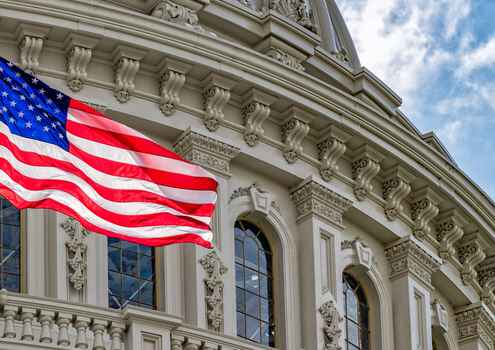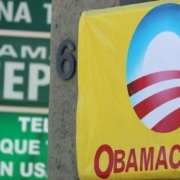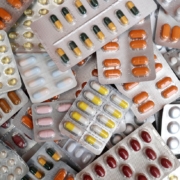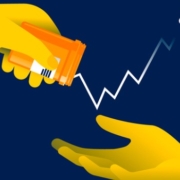Sen. Warren leads call for prostate cancer drug pricing reform
Sen. Warren leads call for prostate cancer drug pricing reform
Published: Jan 25, 2023
By Gail Dutton
BioSpace
A group of 25 senators, led by Sen. Elizabeth Warren (D-MA), requested that HHS Sec. Xavier Becerra exercise march-in rights for Xtandi (enzalutamide), a prostate cancer therapeutic.
March-in rights give the government the right to take a license for itself if it helped to fund the product owner’s research. Xtandi was developed and patented by researchers at the University of California, Los Angles in 2006.
“The National Institutes of Health gave about $500,000 in grants to develop Xtandi,” said former Rep. Jim Greenwood, former president and CEO of the Biotechnology Innovation Organization (BIO), in an interview with BioSpace.
Medivation Inc. licensed the patent and collaborated with Astellas to develop that research into a drug. Astellas spent $1.4 billion on development costs, Greenwood said.
In 2016, Pfizer acquired Medivation for $14 billion. Xtandi is now jointly marketed by Astellas and Pfizer.
Sen. Warren has written six letters in the past two years urging HHS to establish march-in rights for Xtandi, despite HHS rejecting such requests in 2016 and 2017. In 2019, the U.S. Army also rejected such a request. In fact, no request for the U.S. government to exercise march-in rights has ever been granted.
Sen. Warren did not respond to BioSpace’s request for comment.
In the most recent letter, Warren et. al said that because Xtandi’s initial development was funded by taxpayer dollars, taxpayers should have the benefit of that research.
Precedent Favors Industry
Yet, the U.S. Supreme Court in 2011 ruled (Board of Trustees of the Leland Stanford Junior Univ. v. Roche Molecular Systems, Inc. 563 US 776) that the federal government’s act of funding part of a program did not grant title for that program to the government. To grant title to the government in that instance would “supplant one of the fundamental precepts of patent law and deprive inventors of rights in their own inventions,” said [then] Chief Justice John Roberts, writing the majority opinion.
Joe Allen
Joe Allen, executive director of the Bayh-Dole Coalition, called any unjustified exercise of march-in rights “catastrophic” and “government piracy.” As he told BioSpace, “The Bayh-Dole Act provides three specific cases in which march-in rights are legitimate:
- When the company is not making a good-faith effort to commercialize the product
- A national emergency
- To give preference to U.S. manufacturing
Xtandi doesn’t meet any of those conditions, Allen said.
“If march-in rights are misused, companies can no longer trust the government as a partner. No one will be willing to commercialize something if they can’t protect their investment.”
In fact, exercising march-in rights directly counters the purpose of the Bayh-Dole Act, he said.
“The Bayh-Dole Act came about because senators recognized that to develop a really robust biopharmaceutical industry in the United States, it was important to get as much of the brilliant academic research as possible converted into real products,” Greenwood said.
Bayh-Dole, enacted in 1980, financially incentivizes academic institutions to patent innovations and sell or license their rights to the private sector. This translates that initial work into something that may be scaled and commercialized.
For pharmaceuticals like Xtandi, that entails translating basic academic research into a drug. The company that licenses the rights still must perform multiple tests in vitro and in vivo for efficacy, toxicology and many other factors. Then, clinical trials must determine efficacy, side effects and correct dosing.
The cost of clinical trials is perhaps the greatest expense in the drug development process, Greenwood said. Therapeutics, however, make up only about 14% of all healthcare costs.
This isn’t to say the medicines aren’t expensive. They are, and often, exorbitantly so.
Wayne Winegarden
But, “Net prices, which take into account discounts and rebates, have been going down for several years,” Wayne Winegarden, Ph.D., senior fellow, business and economics, Pacific Research Institute, told BioSpace. “Gross prices – what Sen. Warren (probably) is talking about – have been going up in order to get discounts into the system. Our system is messed up.”
A Deterrent to Innovation
Price controls also create huge disincentives for companies to develop orphan drugs, Winegarden continued. This is because rare diseases don’t have large populations, so the potential return on investment is low. Development costs are estimated at $2.9 billion, Winegarden said, and they continue to rise.
Under price controls, therefore, biopharmaceutical companies are likely to conduct less research in these areas because the therapeutics lack the ability to cover their cost of capital.
Greenwood said small molecules would also be at risk. Under the Inflation Reduction Act, Congress imposed price caps on certain medicines. Moving forward, small molecules become eligible for price negotiation nine years after FDA approval, and biologics become eligible 13 years after approval.
Therefore, “Some CEOs of major pharmaceutical companies said they will move money from small molecules to biologics,” Greenwood said.
Under price caps, he suggested companies also are likely to reduce the number of drugs seeking expanded indications or to improve their formulations.
“The profit margins (for pharmaceuticals) aren’t nearly as great as people assume,” Winegarden said, “Particularly when you take the risks into account.”
The average profit margin for drug companies according to a 2018 study was between 12.5 and 14%, comparable to profits from information services, water utilities and real estate development, and well below financial services, banking, software and alcoholic beverages.
Even so, “The biopharmaceutical industry plows a higher percentage of its revenue back into R&D than any other sector in the world,” Greenwood said.
Pharmaceutical companies spent an average of 25% of their revenues on R&D in 2018 and 2019, according to a report by Investopedia.
Returning profits into R&D creates social value in the form of additional innovative products. It also attracts investors.
“It’s a vast, interdependent ecosystem,” Winegarden said.
Prices, revenue, R&D and innovation are intrinsically linked, as the pharma industry has said for decades.
Executives routinely point to Europe as a cautionary tale. Europe, and Germany in particular, “used to be the center of research,” Winegarden said. “Then they imposed drug price controls, and now the U.S. is the most important developer of drugs.”
He offered the oil and natural gas industry as another example.
“Look at how quickly oil and natural gas drillers stop investment in pipelines and new development when they see the government take away their rights. Very quickly, capital dries up. The longer the development time, the more important stable rights are.”
Source: BioSpace









 Reuters
Reuters